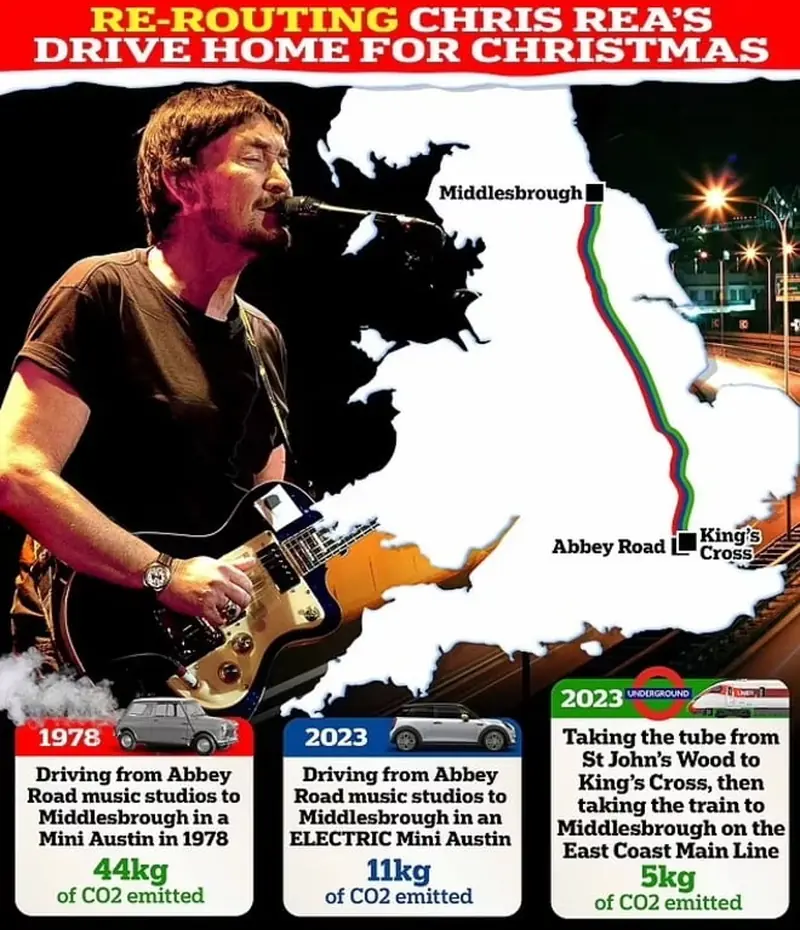
Researchers have calculated that Chris Rea’s journey, which inspired the popular 1986 song “Driving Home for Christmas,” resulted in a carbon footprint of 44 kilograms.
However, according to a team from the University of Sheffield, the well-known singer-songwriter could have reduced that carbon footprint by as much as 88 percent if he had traveled by train. In that case, the CO2 emissions would have been just 5 kilograms.
The Song as a Catalyst for Research
The scientists encouraged the artist to rethink that legendary Christmas trip and perhaps even write a new hit about a more eco-friendly journey, as reported by the Daily Mail.
The focus of the researchers was on the 1978 Austin Mini car owned by the singer’s wife, which is the vehicle referenced in the song, considered one of the best Christmas hits worldwide.
“Driving Home for Christmas” is a little musical road movie dedicated to the joy of reuniting with loved ones. Chris Rea’s actual Christmas trip covered a distance of 241 miles (about 388 kilometers) from the London studio Abbey Road to his hometown of Middlesbrough in North Yorkshire, England.
Recalling the trip that inspired his song, Chris Rea shared that his wife suggested they drive to Middlesbrough in her car to save money.
The lyrics of the single came to him while the car was stuck in traffic. “We kept sitting there, and I looked at other drivers who were just as miserable,” Chris Rea recalled. That’s when he began to hum, “We’re driving home for Christmas…”

What the Researchers Found
Thus, the new study revealed that Chris Rea could have cut his carbon footprint by 88 percent if he had taken the train to Middlesbrough.
Since the song was written, emissions from both cars and trains have decreased by about 80 percent. However, rail travel remains the more environmentally friendly option, noted Dr. Stuart Walker, who led the research.
His team calculated the average carbon dioxide emissions produced during a 241-mile journey using various modes of transportation.

The scientists reported that if the singer had taken the same route in a new electric Mini, the CO2 emissions would not have exceeded 11 kilograms. In general, modern electric vehicles can reduce those emissions to 8 kilograms.
However, the train still stands out for its eco-friendliness over that distance. A train journey would result in carbon emissions of no more than 5 kilograms.
The team also calculated the CO2 emissions from some of Chris’s other favorite cars, including a Ferrari (148 kg) and a tiny Fiat 500 (37 kg). However, none of them could compete with the train, Dr. Walker noted.
According to the scientists, emissions from rail transport are expected to decrease even further in the future.
“This will be aided by the electrification of lines and a gradual reduction in emissions as more electricity is generated from renewable sources,” added Stuart Walker.
